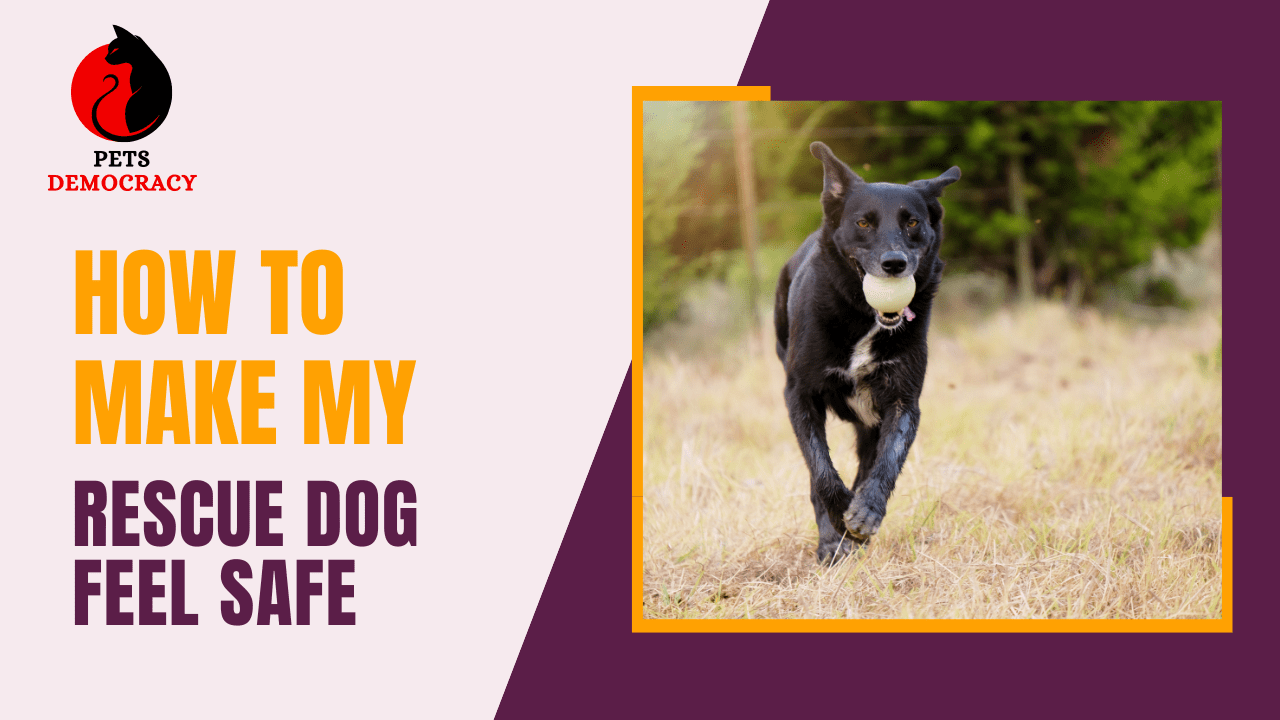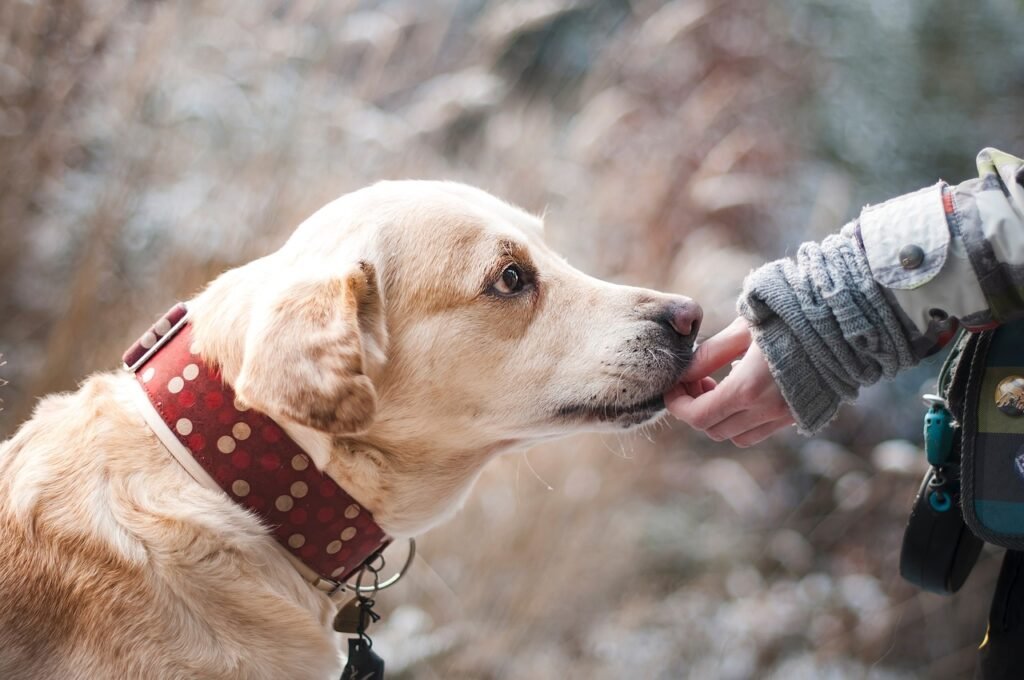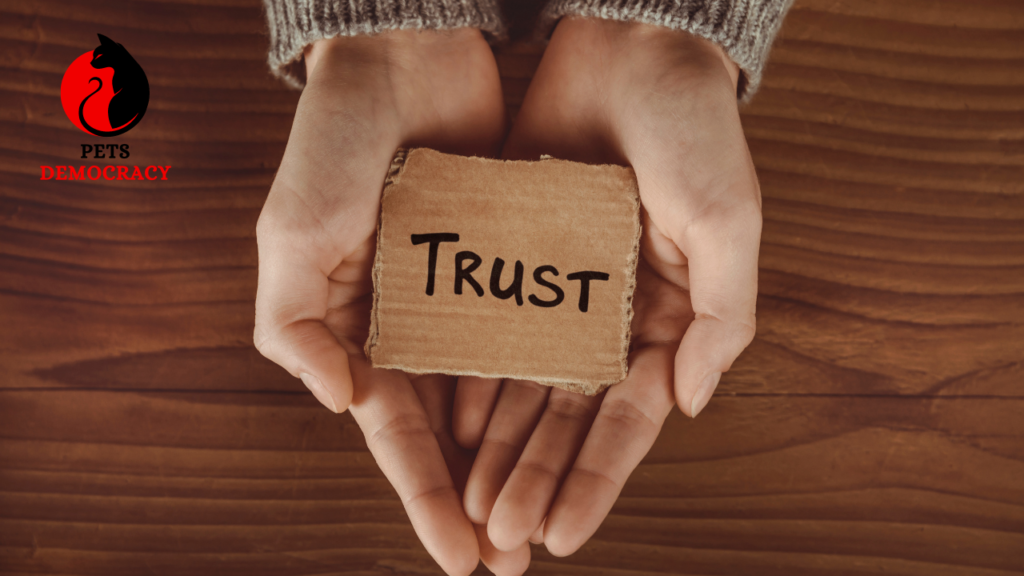
In this blog post, I will share expert tips and strategies on how to make your rescue dog feel safe, helping them overcome their fears and build a strong bond with you.
Rescue dogs can bring immense joy and love into our lives, but they often come with a unique set of challenges. Many rescue dogs have experienced trauma and may struggle to feel safe and secure in their new environment. As their adoptive parents, it is our responsibility to create a safe and nurturing space for them to thrive.
Whether you’re a first-time dog owner or have experience with rescue dogs, these insights will prove invaluable in creating a loving and secure home for your four-legged companion.
How to Make My Rescue Dog Feel Safe

Bringing a Rescue Dog Feel Safe at home can be an incredibly rewarding experience. These dogs often come from difficult backgrounds, having faced abuse, neglect, or abandonment. As their new owner, your primary goal is to make your rescue dog feel safe and secure in their new environment.
Establishing a sense of safety is crucial for building trust, nurturing emotional well-being, and fostering a loving and lasting bond with your furry friend.
In this guide, we will explore effective strategies and tips on How to Make My Rescue Dog Feel Safe and comfortable and ultimately thrive in their new forever home. By understanding their fears, creating a positive environment, and providing structured routines, you can create a haven where your rescue dog can flourish and experience the joy and security they deserve.
Understanding the importance of creating a safe space
Creating a safe space for your rescue dog is essential for their emotional well-being and overall happiness. It is crucial to comprehend the importance of this concept to provide the necessary support and comfort they need during their transition.
Rescue dogs often come from environments where they have little control over their surroundings. They may have been subjected to abuse, or neglect, or lived in chaotic and unpredictable situations. As a result, they may have formed deep-seated fears and anxieties. By creating a safe space, you can help alleviate some of these anxieties and provide them with a sense of security.
A safe space can be a designated area in your home where your furry friend can retreat to whenever they feel overwhelmed or anxious. It should be a quiet and soothing place, away from noise and distractions. Make sure to include their favorite toys, a cozy bed, and perhaps some blankets or a crate if they prefer enclosed spaces.
By providing a safe space, you are giving your rescue dog a sanctuary where they can relax, unwind, and regain their confidence. It should be a space where they can feel in control and protected. Respect their boundaries and make it clear that this is their area—a place where they can find solace whenever they need it.
In the next section, we will discuss practical tips on how to create this safe space and make it an inviting and comforting environment for your rescue dog. Stay tuned for helpful insights that will guide you in making your furry friend feel secure and cherished in their new home.
Stay tuned for the next section where we will dive into creating the perfect safe space for your rescue dog.
Assessing your rescue dog’s specific needs

Every rescue dog is unique and may have different needs when it comes to feeling safe. It’s important to assess your dog’s specific needs to create a safe space that caters to their individual preferences and anxieties.
Commence by paying attention to your dog’s actions and physical cues. Notice what triggers their anxiety and what helps them feel more at ease. For example, if your rescue dog is afraid of loud noises, you might want to place their safe space away from high-traffic areas or invest in noise-reducing materials like soundproof panels or white noise machines.
Additionally, take note of any behaviors that suggest your dog may prefer a certain type of environment. Some dogs may feel more secure in small, enclosed spaces like a crate, while others may prefer an open area with access to natural light.
By understanding and catering to your rescue dog’s specific needs, you can create a safe space that truly makes them feel protected and secure. Stay tuned for the next section, where we will explore practical tips for designing and setting up the perfect safe space for your furry friend.
Suggested Read: How to Know If Dog Feels Hot
Establishing a routine and consistent environment for How to Make My Rescue Dog Feel Safe

Establishing a routine and consistent environment is crucial for making your rescue dog feel safe. Dogs thrive on routine and predictability, as it provides them with a sense of stability and security. By setting a daily schedule for feeding, exercise, and rest, you can help your dog feel more secure and at ease.
Consistency also extends to their environment. Designate specific areas for their bed, toys, and food and water bowls. Keep these items in the same location to create a sense of familiarity and routine. Avoid rearranging furniture or making sudden changes in their surroundings, as this can cause anxiety.
Furthermore, try to stick to a consistent schedule for outings and social interactions. Knowing what to expect will help your rescue dog feel more comfortable and less stressed.
In the next section, we will discuss the importance of positive reinforcement and patience in building trust with your rescue dog. Stay tuned!
Providing essential resources for comfort and security
In addition to establishing a routine and consistent environment, it is essential to provide your rescue dog with the necessary resources to feel comfortable and secure. These resources include a comfortable bed, appropriate toys, and a safe space to retreat to when they need some alone time.
Choose a bed that is the right size and style for your dog’s needs. Consider their sleeping preferences, such as whether they prefer a cozy den-like space or an open, cushioned area. Providing a comfortable bed will not only help your rescue dog feel physically at ease but also provide a sense of ownership and security.
Toys are essential for mental stimulation and comforting your rescue dog. Select toys that are appropriate for their size and breed, offering a variety of options to keep them engaged. Chew toys, puzzle toys, and comfort toys like stuffed animals can all contribute to their sense of comfort and security.
Lastly, create a safe space for your rescue dog to retreat to when they need some alone time or feel overwhelmed. This can be a specific room or corner of your house where they can relax without disturbance. Fill this space with their bed, toys, and perhaps a blanket or a piece of clothing that smells like you, providing them with a familiar scent and a sense of security.
By providing these essential resources, you are ensuring that your rescue dog has everything they need to feel safe and secure in their new home. In the next section, we will delve into the importance of using positive reinforcement methods to build trust and confidence. Keep reading to discover effective training techniques for your rescue dog.
Building trust and confidence through positive reinforcement

Building trust and confidence is crucial when it comes to helping your rescue dog feel safe in their new environment.
Utilizing positive reinforcement proves to be a gentle and effective training method, fostering a robust connection between you and your beloved pet.
When using positive reinforcement, it’s important to reward your dog for desired behaviors rather than focusing on punishment for unwanted behaviors.
This can be done through treats, praise, or even a favorite toy. By consistently rewarding your rescue dog for good behavior, you are not only encouraging them to repeat that behavior but also boosting their confidence and trust in you.
It may take time for your rescue dog to understand what you expect from them, especially if they have had a difficult past. Avoid harsh punishments or scolding, as this can cause fear and anxiety, further undermining their sense of security.
Incorporating positive reinforcement into your training sessions is a powerful way to build a strong foundation of trust and confidence with your rescue dog.
In the following section, we will explore the significance of socializing your dog and how it can contribute to their overall sense of safety and well-being. Stay tuned!
Seeking professional help, if needed
Seeking professional help is an important step to consider if your rescue dog is struggling to feel safe in their new environment. Some dogs may have experienced severe trauma or have behavioral issues that require the expertise of a professional trainer or behaviorist.
A professional can assess your dog’s individual needs and create a tailored training plan to address their specific challenges. They can guide how to make my rescue dog feel safe and secure.
This may involve implementing specific techniques, such as desensitization or counterconditioning, to gradually build your dog’s confidence and reduce fear or anxiety.
Remember, it’s not a sign of failure to seek help. Sometimes, a trained professional is the missing piece to helping your rescue dog feel safe and thrive in their new home. Don’t hesitate to reach out if you feel overwhelmed or unsure of how to best help your furry friend.
FAQs For How to Make My Rescue Dog Feel Safe
How can I help my rescue dog feel safe in a new environment?
Create a quiet and designated space with familiar items to ease the transition.
What should I do if my rescue dog is fearful or anxious?
Establish a consistent routine, offer positive reinforcement, and gradually expose them to new experiences.
Is building trust important for a rescue dog’s sense of safety?
Yes, building trust through patience, gentle interactions, and respecting their boundaries is crucial for their emotional well-being.
Conclusion For How to Make My Rescue Dog Feel Safe
Ensuring the safety and comfort of your rescue dog should be a top priority as their well-being greatly depends on it.
In this blog, we discussed some important steps you can take to make your rescue dog feel safe in their new environment. We explored the significance of creating a consistent routine, providing a safe and comfortable space, using positive reinforcement training, and seeking professional help if needed.
Remember, every rescue dog is unique and may require different approaches to feel safe. Be patient, understanding, and consistent in your efforts and always observe your dog’s reactions and adjust accordingly. With time, love, and proper care, you can help your rescue dog overcome their past traumas and create a secure and loving home for them.
Suggested Read: How to Know If Dog Feels Hot



Pingback: Discover German Shepherd Dog Breed || 2024 Pets Democracy
Pingback: Bernese Mountain Dog For Sale || 2024 » Pets Democracy